Your bathroom vanity serves as the centerpiece of your morning and evening routines because it makes one of the most important decisions regarding design and function in your bathroom renovation.
It can provide important storage for all of your daily essentials while it sets the tone for your entire space beyond just housing your sink.
When you choose the right vanity, balance three key factors. The size must fit within your space, the storage capacity must meet your needs, and the style must reflect your personal taste.
Because of how many options are available now, from sleek wall-mounted units to customary freestanding cabinets, deciding can feel quite overwhelming.
We will explore popular styles, different vanity types, and helpful tips to select the perfect vanity for your bathroom and lifestyle, combining functionality with beauty.
Understanding Bathroom Vanities
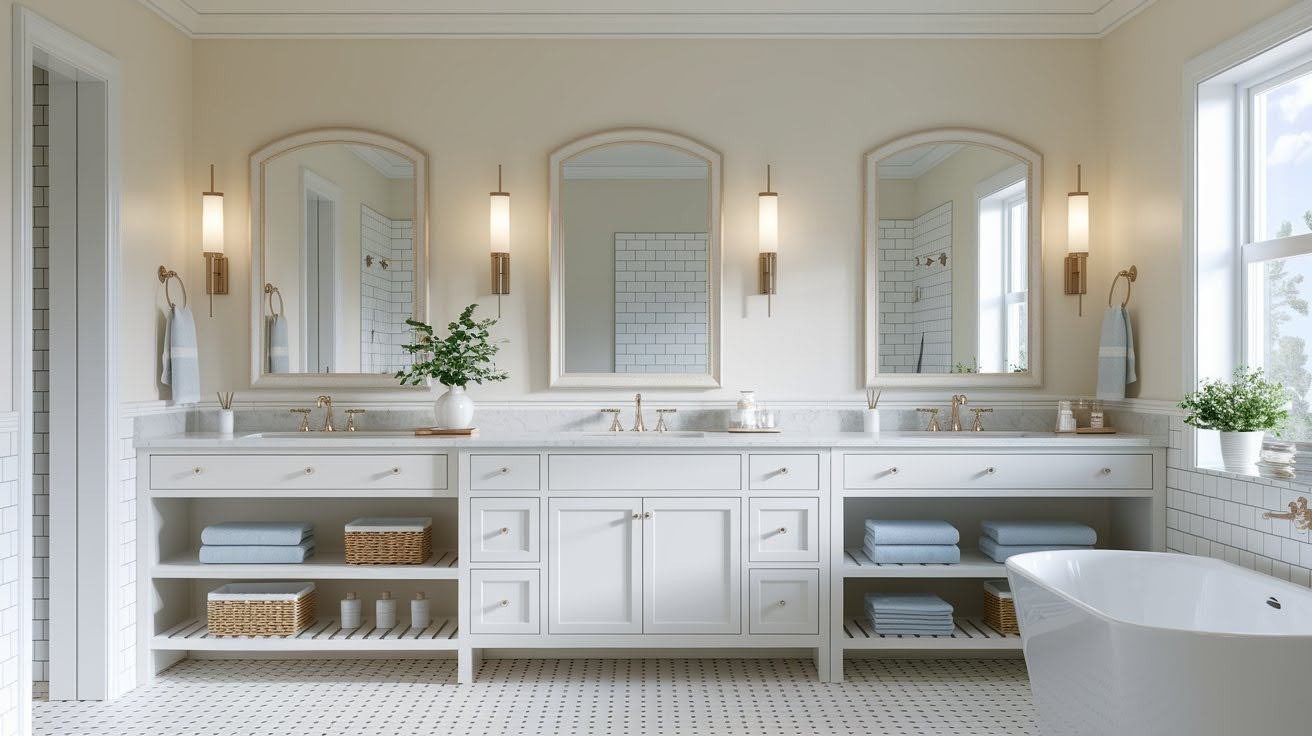
A bathroom vanity combines a sink, storage cabinet, and countertop into one cohesive unit, differing from standalone sinks that offer no storage space.
This integrated approach provides workspace for daily routines while concealing plumbing and creating a finished appearance.
The vanity serves as both a functional hub for personal care and a storage solution for toiletries and supplies.
Before selecting your vanity, consider your bathroom’s size and layout to ensure a proper fit without blocking traffic flow.
Think about storage needs, required counter space, and the number of daily users to determine if you need single or double configurations.
Existing plumbing locations and local building codes may limit placement options and require professional installation considerations for optimal results.
Types of Bathroom Vanities by Installation Style
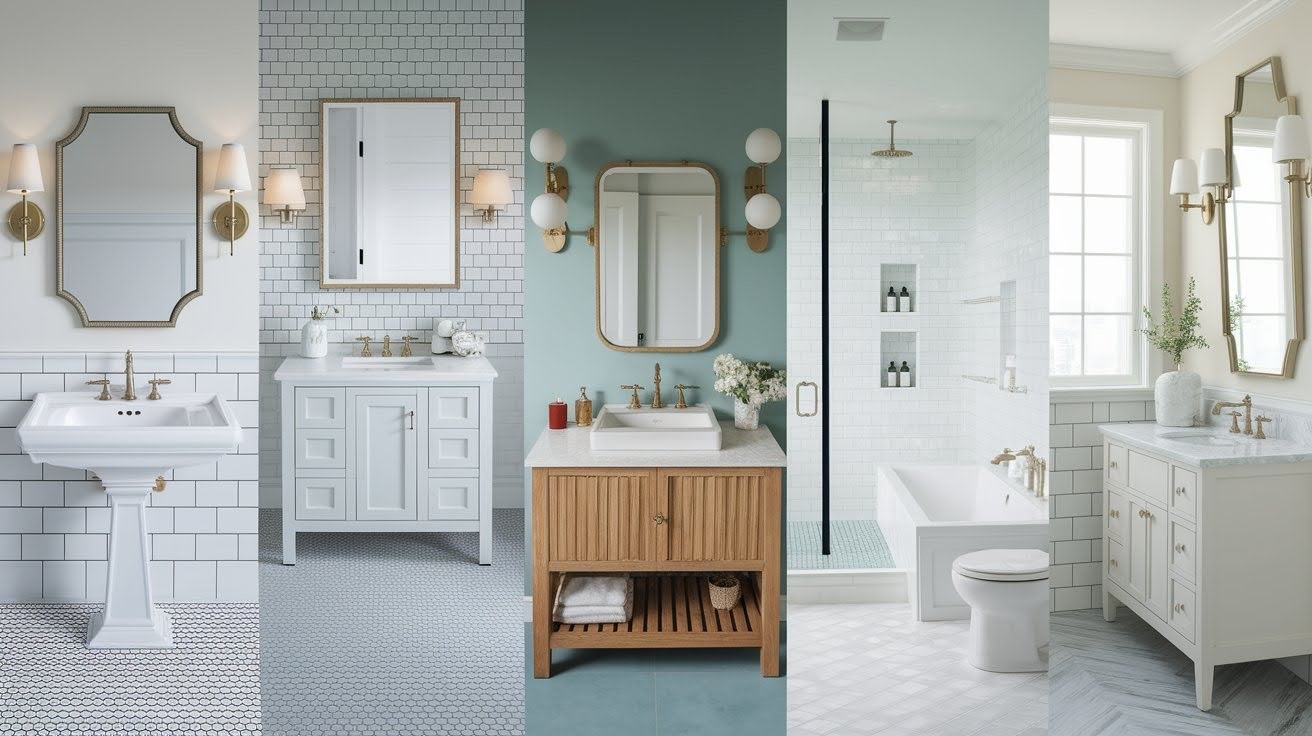
Pedestal and Wall-Mounted Sinks
Pedestal sinks feature decorative bases that conceal plumbing with minimal storage, perfect for powder rooms. Wall-mounted sinks attach directly to walls, creating clean lines and easy floor cleaning access.
Floating (Wall-Mounted) Vanities
Floating vanities mount to walls with hidden brackets, making small bathrooms feel larger by exposing floor space. This modern design requires professional installation and solid wall support for safety.
Freestanding Vanities
Freestanding vanities sit on floors like furniture, offering the widest design range and most storage space. Installation is straightforward without requiring wall mounting or custom construction work.
Built-In Vanities
Built-in vanities integrate seamlessly with walls and cabinetry for custom appearances and maximum storage potential. They require professional installation and become permanent fixtures that are difficult to relocate.
Corner Vanities
Corner vanities fit into bathroom corners, efficiently using wasted space in small rooms. Available in triangular or square designs, they work well in compact bathrooms and powder rooms.
Types of Bathroom Vanities by Sink Configuration
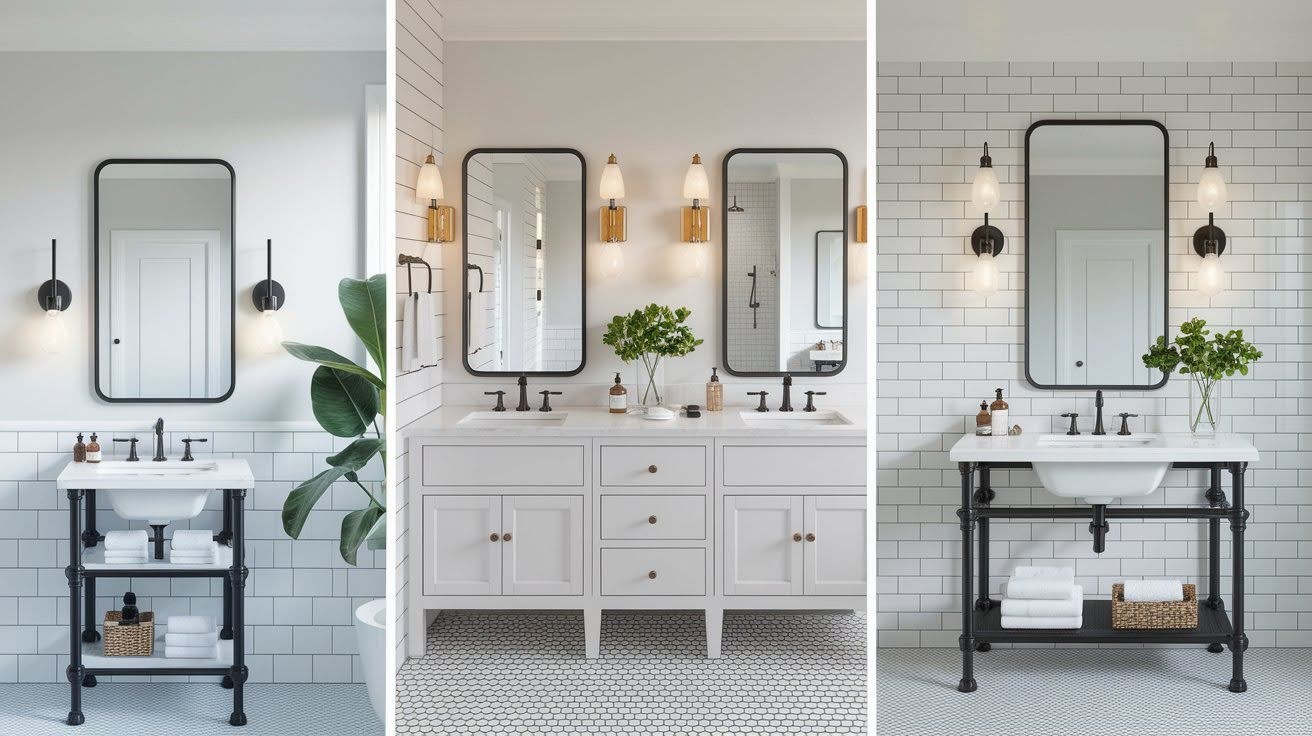
Single-Sink Vanities
Single-sink vanities feature one basin, perfect for individual users or smaller bathrooms. They provide adequate counter space and storage while fitting comfortably in standard layouts.
Double-Sink Vanities
Double-sink vanities include two basins, ideal for couples or families sharing bathroom space. They offer twice the counter area and storage but require more space and plumbing.
Console Vanities
Console vanities combine open-frame construction with storage, featuring exposed legs with shelving or towel bars. This hybrid design bridges minimal and full-storage vanity options effectively.
Types of Bathroom Vanities by Sink Style
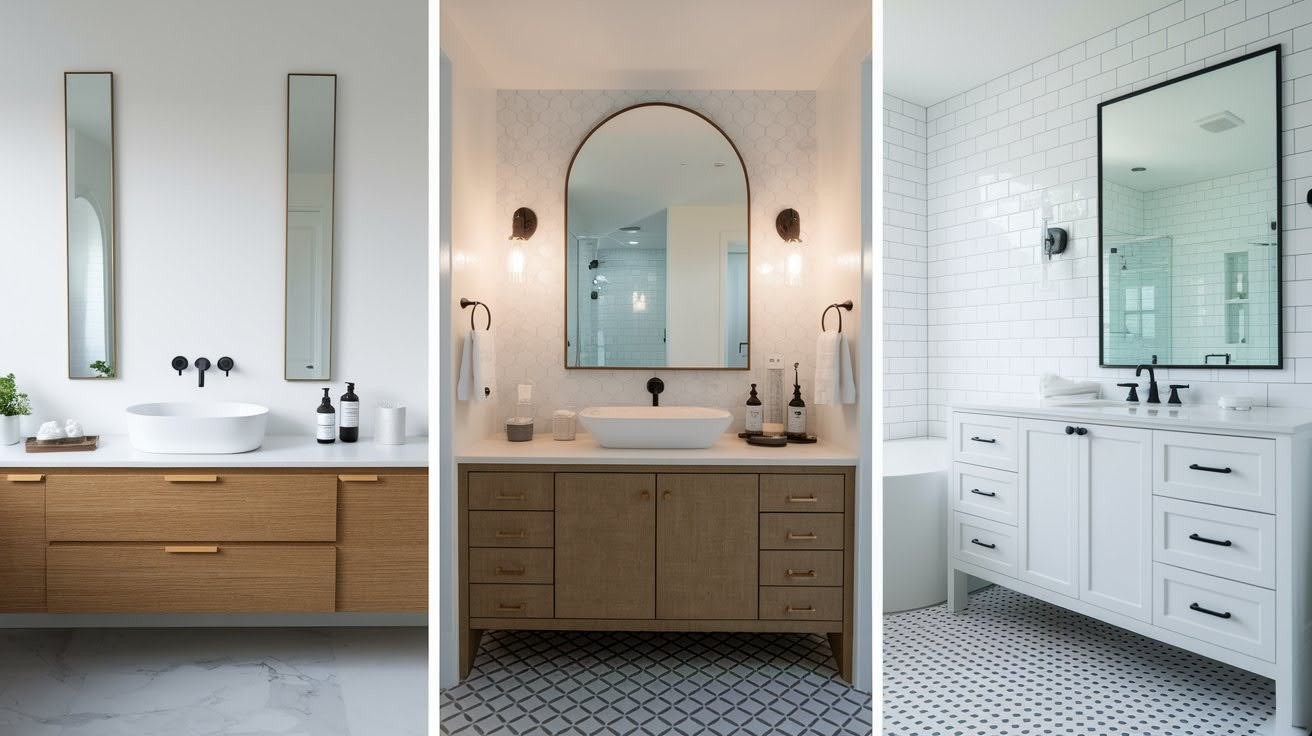
Undermount Vanities
Undermount sinks install beneath countertops, creating seamless lines that are easy to clean. Water wipes directly into the sink without catching on the edges, providing more usable counter space.
Vessel Vanities
Vessel sinks sit on top of countertops like decorative bowls, creating dramatic focal points. Available in various materials, they provide luxurious, spa-like appearances in contemporary settings.
Drop-In or Semi-Recessed Sinks
Drop-in sinks feature raised rims that rest on countertop surfaces for traditional installations. Semi-recessed versions sit partially below counters while maintaining visible edges for classic functionality.
Popular Vanity Design Styles
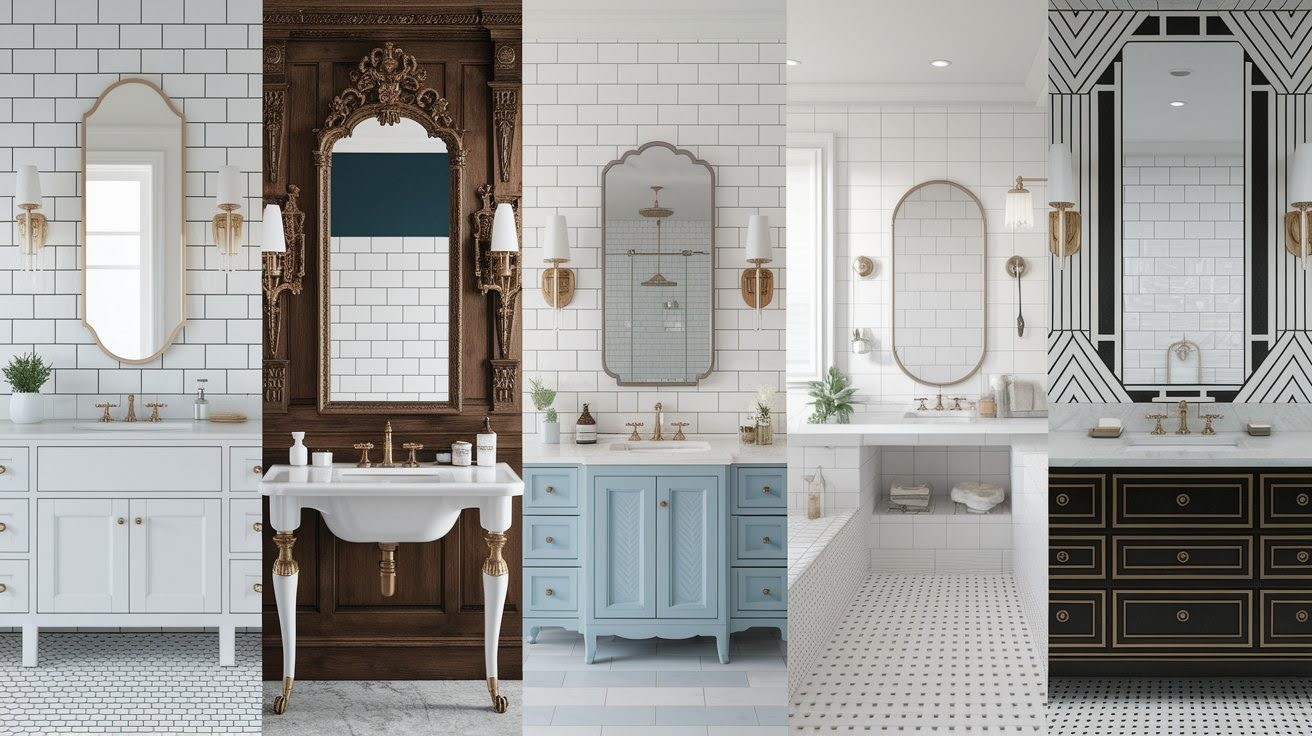
Shaker Style
Shaker vanities feature clean lines with recessed panel doors for timeless appeal. Simple construction focuses on functionality while providing ample storage in versatile designs.
Victorian Style
Victorian vanities embrace ornate details and vintage elements with decorative hardware and intricate woodwork. Clawfoot or freestanding designs add old-world charm.
Hampton/Coastal Style
Hampton vanities use light colors and natural textures to create relaxed, beachy atmospheres. Weathered finishes and vessel sinks bring vacation vibes to everyday routines.
Modernist Style
Modernist vanities emphasize minimalist floating designs with metal accents and clean geometries. Bold color pops provide personality while maintaining an uncluttered, spacious appearance.
Art Deco Style
Art Deco vanities feature geometric patterns, symmetrical designs, and striking color combinations. Sharp angles and metallic finishes create dramatic focal points celebrating 1920s glamour.
Size and Storage Considerations
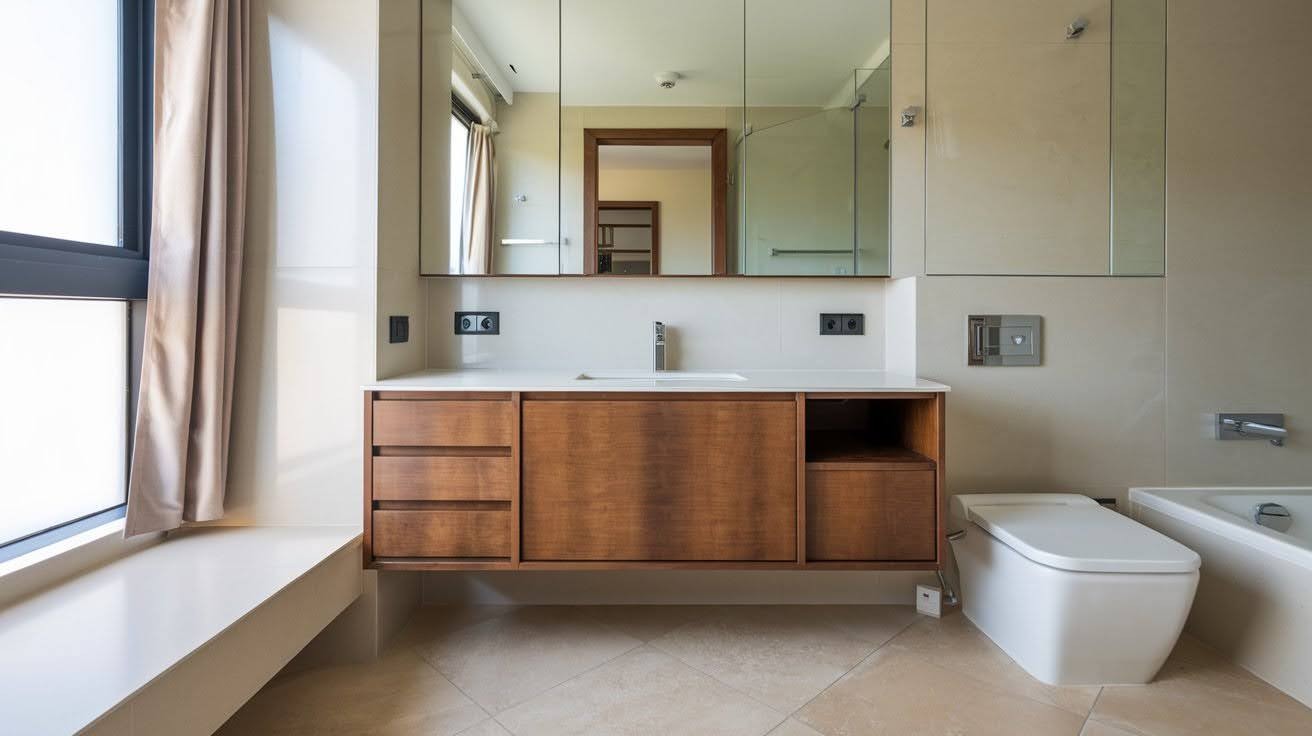
Standard vanity widths range from 24 inches for compact spaces to 72 inches for double configurations, with popular single sizes at 30, 36, or 48 inches.
Depth typically measures 18-24 inches, while height ranges from 32-36 inches for comfortable use.
Always leave 30 inches of clearance in front and consider door swings when planning placement.
Comfort height vanities at 36 inches are becoming more popular for ergonomic benefits.
Deep drawers with soft-close slides work better than cabinet doors for accessing toiletries and personal items. Open shelving creates visual lightness but requires more maintenance to stay organized.
Integrated linen cabinets extend storage vertically for towels and supplies. Matching medicine cabinets above complete the storage system for smaller personal items.
How to Choose the Right Bathroom Vanity
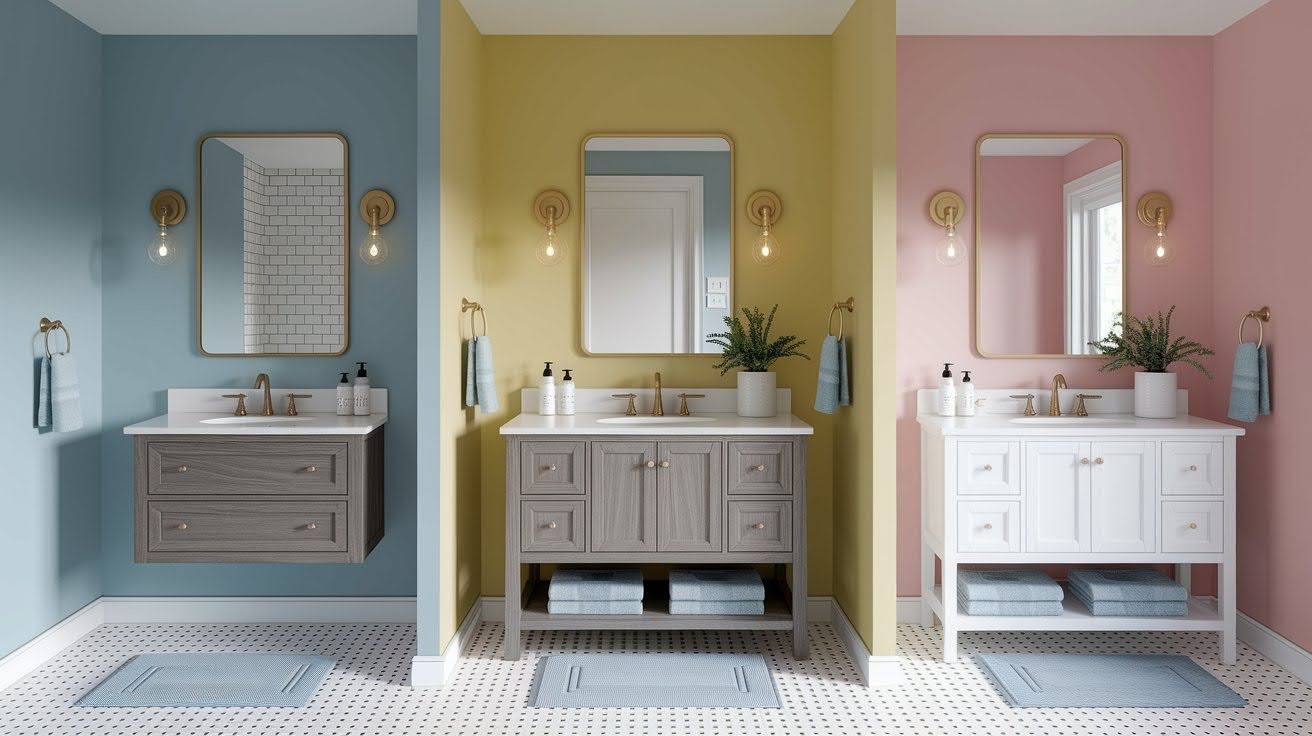
Match Your Bathroom Type
Half baths need compact 24-30 inch vanities with minimal storage since guests use them briefly. Full bathrooms require substantial vanities with adequate counter space and storage for daily routines.
Primary bathrooms often benefit from double vanities or larger single units for two people’s belongings. Guest bathrooms need enough storage for visitor essentials while maintaining a welcoming appearance.
Match Your Lifestyle
Consider the daily user count to determine single versus double vanity needs, with couples preferring double sinks for efficiency.
Assess storage requirements based on regularly used items and preferred organization systems.
Families with children need lower heights and safety features, while adults may prefer comfort height vanities. Choose materials based on maintenance preferences, as high-gloss surfaces show spots but clean easily.
Final Thoughts
After years of helping homeowners during bathroom renovations, I’ve seen complete conversions of daily routines and home value from the right vanity choice.
When you have a comprehension of the different vanity types, you can balance your style with functionality in a perfect way.
Measure your space carefully, and assess your storage needs honestly. Also, be sure to choose a style to makes you smile each morning.
Remember, if you invest in quality vanity, you invest in daily comfort along with your home’s worth.
In order to get personalized guidance, you can consult with a bathroom designer, or you can visit a showroom if all of your options overwhelm you. Your perfect vanity awaits you now.
Frequently Asked Questions
What’s the difference between floating and freestanding vanities?
Floating vanities mount to walls, making small bathrooms feel larger by exposing floor space. Freestanding vanities sit on floors like furniture and offer more storage capacity.
How do I know if I need a single or double vanity?
Consider daily users and available space in your bathroom layout. Couples prefer double vanities for efficiency while single users maximize storage with larger configurations.
What’s the standard height for bathroom vanities?
Standard height ranges from 32-36 inches, with comfort height at 36 inches becoming popular. Choose based on user height and daily comfort preferences.
Which sink style is easiest to clean and maintain?
Undermount sinks create seamless countertops that clean easily with direct debris removal. Vessel sinks look dramatic but require more maintenance around the base.
How much space do I need around a bathroom vanity?
Leave at least 30 inches of clearance in front for comfortable use. Consider door swings and traffic patterns when determining placement and sizing.

